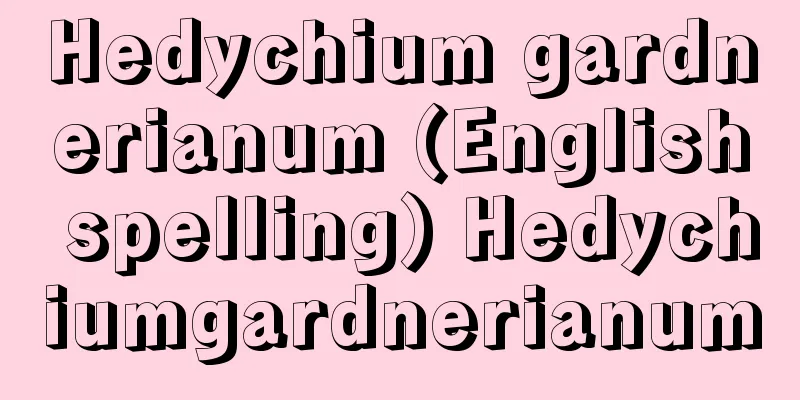Hakuwa

|
Colloquial Chinese. It is contrasted with written language. However, there are various intermediate styles that are a mixture of the two, and the distinction is not necessarily absolute. It is also not the same as purely spoken language, and some believe that it is merely written language. It has been pointed out that baichuo of the time was incorporated into the classics, writings of the Hundred Schools of Thought, and some Tang poetry going back to ancient times, but generally, the style of writing that is thought to be based on the colloquial language of the northern dialects of the time, which became established in stories and readings aimed at the common people after the Tang Dynasty's henbun (narratives that explain Buddhist scriptures in an easy-to-understand way), is called baichuo. Literary works written in vernacular language include the story books from the Song to Ming dynasties such as "Keihon Popular Novels" and "Quanxiang Pinghua", as well as "Sanyan Er Bai", Yuanqu (especially the dialogue), and Ming and Qing chapter novels such as the Four Great Classical Chinese Novels of the Ming Dynasty, which have formed a parallel stream to traditional literate literature since the Song dynasty. Initially, it was considered to be inferior to literate literature, but its importance has gradually increased, and especially with the literary revolution in the late 1910s, the idea that the history of vernacular language literature should be emphasized and that vernacular language literature based on modern colloquial language should be the center of attention became widely supported, and it has since become the mainstream of Chinese literary history. [Noboru Maruyama] Source: Shogakukan Encyclopedia Nipponica About Encyclopedia Nipponica Information | Legend |
|
中国語の口語。文言(ぶんげん)(文語)に対していう。ただしその中間には、さまざまの度合いで両者の混合した文体があり、その区別はかならずしも絶対的なものではない。また純粋の口頭語とも同じではなく、あくまでも書写語だとする見解もある。古くさかのぼって、経書や諸子百家の文章、唐詩などの一部にも、当時の白話が取り入れられていることも指摘されているが、一般には、唐の変文(へんぶん)(仏典などをやさしく説いた語り物)以後、庶民を対象にした語り物、読み物に定着した、当時の北方方言を中心とした口語に基づくと考えられる文体を白話とよぶ。 白話による文学作品は『京本(けいほん)通俗小説』『全相平話(ぜんそうへいわ)』などをはじめ『三言二拍』に至る宋(そう)から明(みん)にかけての話本、元曲(げんきょく)(とくにせりふ)、明の四大奇書をはじめとする明清(しん)の章回小説などで、宋以後、伝統的な文言文学と並行する一つの流れを形づくっている。当初は文言文学に比して低いものとみなされてきたが、しだいにその比重を増し、とくに1910年代後半の文学革命によって、白話文学の歴史を重視するとともに、現代口語を基礎とする白話の文学が中心であるべきだ、とする考え方が広く支持されるようになり、以後、中国文学史の主流となるに至っている。 [丸山 昇] 出典 小学館 日本大百科全書(ニッポニカ)日本大百科全書(ニッポニカ)について 情報 | 凡例 |
<<: Vernacular poetry (English: Bái huà shī)
Recommend
Large room - Obeya
A kabuki term. Dressing rooms were allocated acco...
Mswati I (English spelling)
…According to legend, the Swazi people are said t...
Ryuho
A haiku poet of the early Edo period. Nonoguchi. ...
Kurfürstendamm - Kurfürstendamm
...Berlin, which had a population of 3.86 million...
Plesiosaurus - Plesiosaurus (English spelling)
A marine reptile that flourished in the Early Jur...
Academic Society - Gakukyokai
...A general term for organizations organized by ...
Wami Pass
A pass on the border between Gunma and Nagano pre...
Umami
The flavors include monosodium glutamate, disodium...
Arrhenius's ionization theory - Arrhenius's ionization theory
...Solutions of substances called electrolytes no...
Turkish Music - Turkish Music
The music of the Republic of Turkey, which consist...
Fallacy of Illegality - Law Enforcement
...Broadly speaking, there are the strict intent ...
Gelfand, Israil Moiseyevich
Born: September 2, 1913, Okuny, Russian Empire [Di...
Instigation - Kyousa
Instigating another person to make the decision to...
Kakekotoba - Hanging Words
A rhetorical device in waka poetry. It is also wr...
Gishu
A town in Uiju County in the west of North Pyonga...









